While travelling in Bogotá, Columbia, Karen Paulina Biswell stopped by a family selling handcrafted jewelry. Fascinated by their story, she invited them back to her hotel, El Hotel Dorantes, and shot her series Nama Bú, a portrait of a group of Emberá Chamí people.
From fascination to misunderstanding to “true revelation,” Nama Bú is conscious of identity, human displacement and a sense of belonging.
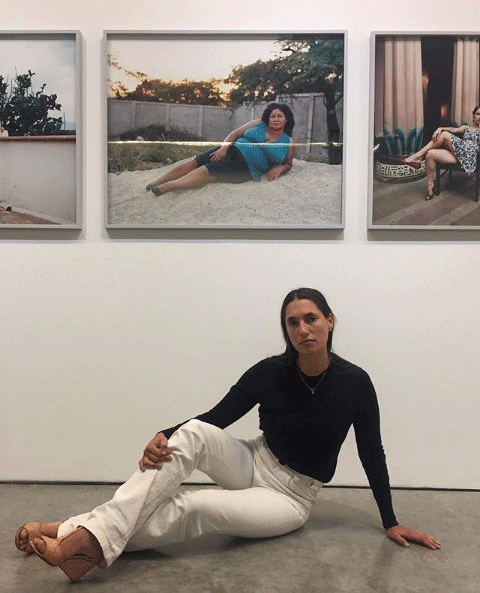
The Emberá Chamí is a community indigenous to Columbia. Many Emberá Chamí people have been displaced by conflict and forced to leave their land “to the urban centers of the country”.
Nama Bú emphasizes the United Nations’ Life on Land, and Gender Equality Sustainable Development Goals (SDGs).
In the native Emberá language, Nama Bú means ‘we exist’. Karen’s portrait series shows how cultures, communities, languages, and people are prone to extinction if capitalist urbanization is not checked.
Karen is also critical of gender equality in poor, war-torn communities. While discussing the disappearance and rape of a 13-year-old girl by seven young soldiers, Karen writes in an Instagram post, “I wonder in which spiritual state of mind those young soldiers could have been to commit this atrocity.”
Karen argues that when “war is the only education” there is little or no hope of the future. Her portrait series showcases extreme beauty amidst extreme violence.
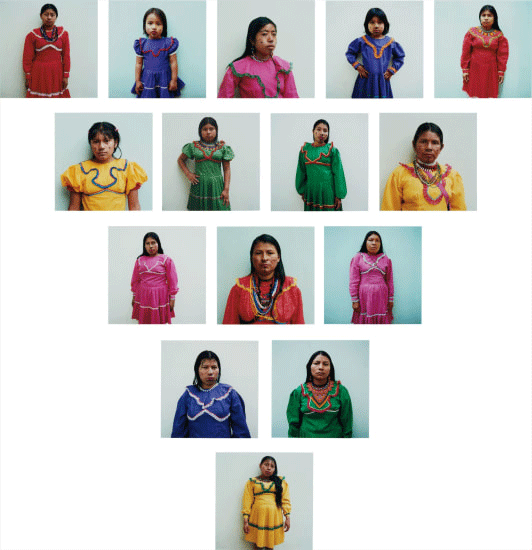
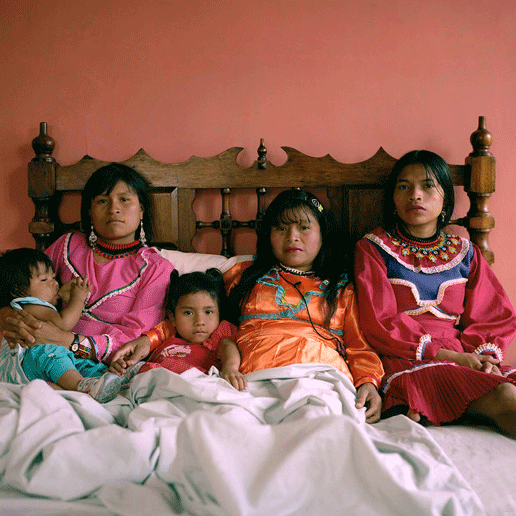
Karen’s parents were Colombian who emigrated to Paris in the early 1990s to save themselves from political violence in their country.
While talking about growing up between Paris and Colombia, Karen says, “'Having been raised between Paris and Colombia, I have always been in transit from one world to the other, my identity always being questioned and reality being fought out between European urban existence and the idea of a lost paradise.”
While discussing questions of identity and life on land, Karen says, “The questions put forth by Gauguin such as, “who are we?”, “where do we come from” and “where are we going” are relevant to my life. I am addressing these questions through my work though I don’t have all the answers. I create a silent space, a mirror, allowing these questions to be explored by the audience or the viewer.”
Nama Bú examines how regardless of ethnicity, displacement due to conflict affects people and devastates communities.
“We were curious about each other's stories and lives,” says Karen about the Emberá Chamí people. “We’d both experienced the notion of being displaced, them by the circumstances they had to assume, me by my personal history.”
The women in the portraits wear bright, candy coloured clothes with frilled collars and pleated skirts. Some have customary face markings. Some are wearing matching beaded jewellery. Some are covered with giant leaves.
Most of the portraits are taken in the El Hotel Dorantes, whose lavish backgrounds provide stark contrast to the uprooting of the endangered community.
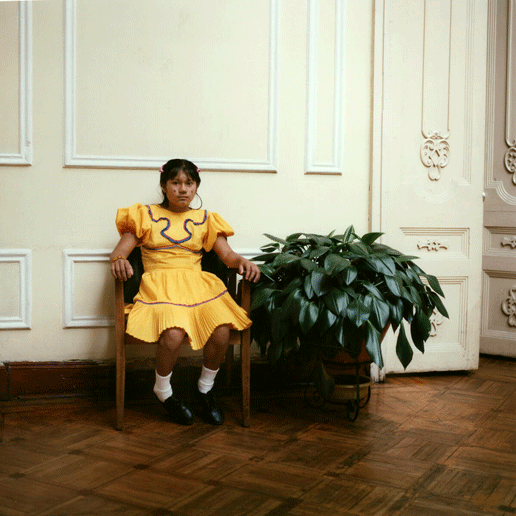
As Karen explains, Nama Bú emphasizes the “willingness expressed by certain women in regards to their own bodies and their varied and complex natures. This mysteriousness is what I am interested in, their power and its manifestation.”
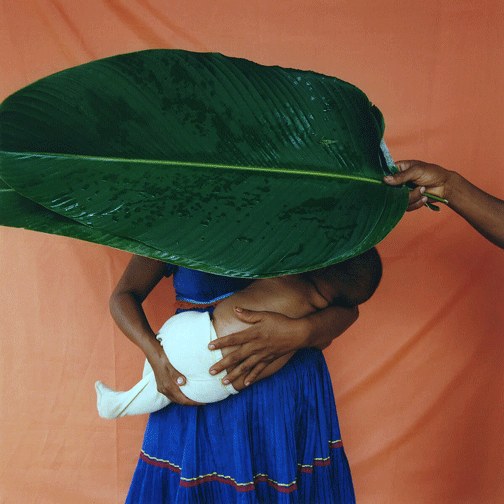
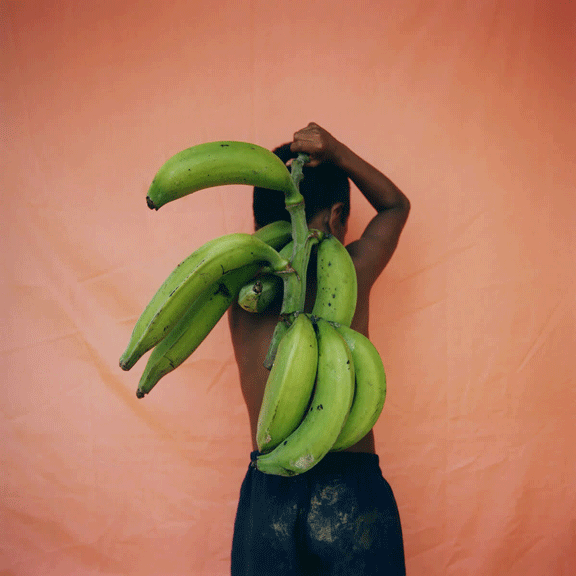
Explaining the abruptness of leaves and nature shots in the portraits, Karen says, “In my pictures nature can be like a magic trick coming out of a hat. It appears out of nowhere in the most surprising ways. [...] I don't necessarily see the natural elements as something separate from the different people and emotions in the portraits; we are a part of nature and it is a part of us.”
Talking about her process of familiarizing with her subjects and planning the shoots, Karen explains that she doesn’t categorize her work as documentary or a voyeuristic misrepresentation and exoticism of the Emberá Chamí people.
Nama Bú is concerned with the “grey area between subjectification and objectification” of cliches that are often highly visible in many works presenting indigeneity. She says the key to negating a photographer’s bias is to avoid “all the stereotypes of our collective unconscious and the weight of history”.
Karen says, “I'm much more interested in the world of my dreams and fantasies while not losing my hold or take on reality. [...] I’m looking to capture a particular sense of the real, a heightened sense of beauty, of the unpredictable, the unique, a harmony and a certain wildness.”
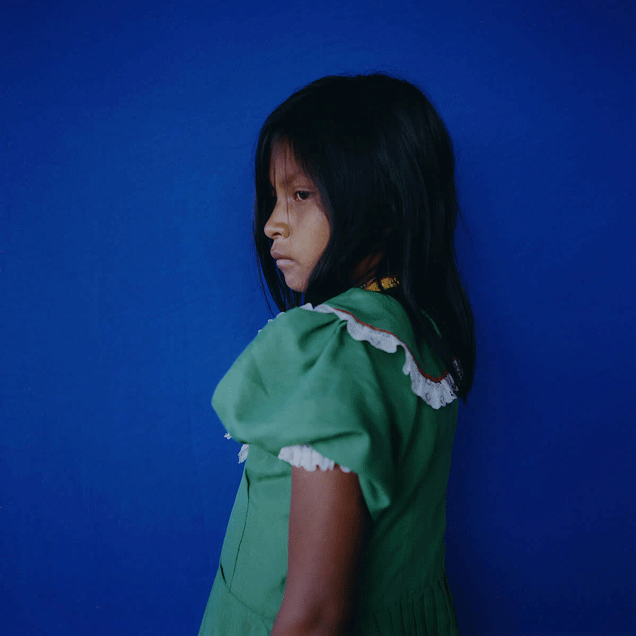
Karen’s subjects are often people from poor marginalized communities whose confidence in their identities plays a huge role in the portraits. In an interview with Foto-Feminas, Karen says, “Just like the jesters in the paintings of Velazquez, the ‘freaks’, were the only ones who could get away with speaking the truth. I believe this also comes through in the portrayal of my ‘characters’ who are often the natives, prostitutes and people in generally vulnerable situations.”
Karen says Nama Bú became her personal journey of projection and “fabulation” which transcends meaning, “not interested in revealing per se, but in exploring what is hidden”.
Check out Karen Paulina Biswell’s Nama Bú series on the PhMuseum website, and her Instagram page for more updates on her recent series, Ellas.
